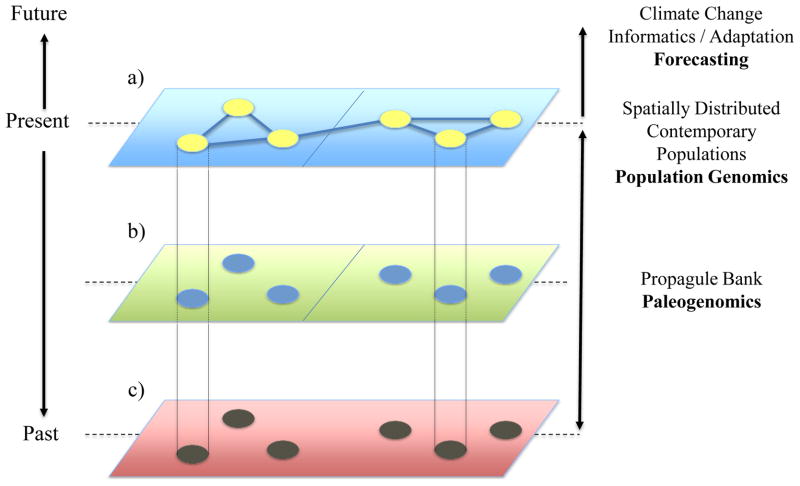Figure 1.
Genomics of propagule banks in space and time
Dormant propagules sampled from sediment, soil or ice cores can be used to reconstruct evolutionary processes, consisting of demographic and adaptive changes, over extended time axes. The reconstruction of evolutionary processes conducted in parallel through time in several populations distributed at regional or continental scales informs our understanding of adaptive responses of natural populations to environmental changes. Spatially-structured contemporary populations (a) are amenable to population genomic and landscape genomic analysis. Dormant propagules from the recent past (b) can be resurrected and compared directly to contemporary populations using the full range of available DNA- and RNA-based genomic techniques as well as using trait-based approaches. Ancient (a)DNA from the far past (c) provides an archive of genetic material that can be compared to the one of contemporary populations and indexed to reconstruct past environmental conditions and historical selective regimes. The joint consideration of past and present genetic structure in a time-series provides critical parameterization for future forecasting.

